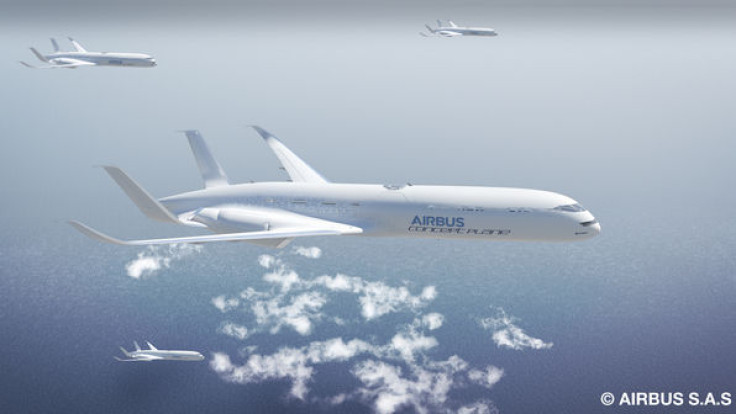Future passenger aircraft will fly in formation 'like flocks of birds' at hypersonic speeds

Scientific advancements in air travel outlined by the chief executive of National Air Traffic Services, Richard Deakin, has revealed the shape of things to come for airline passengers.
Deakin predicted that in the future airlines could fly their aircraft in formation like flocks of birds.
Speaking at a Royal Academy of Engineering lecture, Deakins suggested this could happen within 30 years and would reduce drag and be more fuel-efficient, according to a Sunday Times report.
"It won't take the wing-tip precision of the Red Arrows or Blue Angels, either. A safe flight separation of about 20 wingspans – far less than the four nautical miles that separates civil aircraft today but still over one nautical mile – is sufficient to reap the benefits," said an Airbus spokesman.
"In a V formation of 25 birds, each can achieve a reduction of induced drag by up to 65% and increase their range by 7%. While efficiencies for commercial aircraft are not as great, they remain significant."
Hypersonic travel and traffic control prioritisation
Hypersonic air travel, with aircraft flying faster than 2,840mph could be possible within 50 years, allowing passengers to fly from London to Sydney and back within a day at a cruising altitude of 100,000 ft.
Under "four-dimensional" flight management, controllers would be able to predict exactly where planes will be every moment of their flight. It's expected that by 2018, a network of 66 satellites will allow airliners to be tracked across the north Atlantic for the first time.
If aircraft are flying on very specific flight paths, Deakin argued that air traffic control towers may no longer be required.
"Why not have a virtual tower in a regional centre where the controller can see and control everything with remote technology, sensors and infrared cameras?" Deakin asked.
There could also be a 'gold card' to allow frequent flyers and priority airlines land first.
Airliners carrying high numbers of business or first-class passengers could in future be given priority by air traffic controllers, allowing them to jump the queue and land more quickly, according to Deakin.
Plans to transform the way controllers manage the skies could allow them to prioritise specific flights at the request of airlines, including "premium services" with "high-value customers" on board.
The controllers who are in charge of 6,000 flights in UK airspace daily, could also give permission to aircraft with a large number of passengers who are connecting to other flights to jump the queue of jets waiting to land or take off at a busy airport.
Aviation experts say such a move would end the traditional "first come, first served" approach to air traffic control.
© Copyright IBTimes 2024. All rights reserved.







